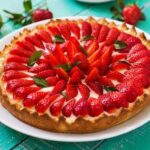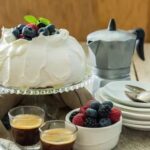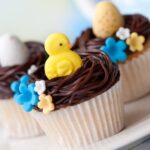If you’ve ever wanted to learn how to decorate cake at home, look no further. Whether you’re a seasoned baker or new to the world of cake decorating, there’s something truly special about creating homemade treats that are both delicious and visually stunning. In this article, we’ll explore the joy of decorating cakes at home, providing tips and techniques for achieving professional-quality results in your own kitchen.
When it comes to decorating cakes at home, having the right tools and ingredients is essential. From piping bags to edible glitter, we’ll discuss everything you need to gather before getting started. Then, we’ll dive into the process of choosing the right cake for your decorative masterpiece, offering tips for selecting the perfect base that complements your creative vision.
As we continue our exploration of cake decorating, we’ll cover frosting techniques, mastering smooth and even frosting for a flawless canvas on which to create beautiful designs. We’ll also provide step-by-step instructions for working with fondant, as well as piping and icing techniques for creating intricate designs with different types of tips and colors.
Additionally, we’ll explore using edible decorations such as flowers and sprinkles to add a pop of color and texture to your creations. And finally, we’ll offer tips for achieving professional-quality results by practicing patience and utilizing the right tools and techniques.
So if you’re ready to embark on a journey of creativity and deliciousness, join us as we celebrate the joy of decorating cakes at home. Whether it’s for a special occasion or simply for the love of baking, there’s nothing quite like the satisfaction of showcasing beautifully decorated homemade cakes.
Gathering the Necessary Tools and Ingredients
Decorating a cake at home is a fun and rewarding activity that allows you to unleash your creativity and impress your friends and family with delicious treats. One of the first steps in successfully decorating a cake is gathering the necessary tools and ingredients. Whether you are a beginner or an experienced baker, having the right supplies is essential for creating beautiful, professional-looking cakes.
To get started, here are some essential tools and ingredients to have on hand when decorating a cake:
- Piping bags: These are essential for applying frosting in various designs and patterns. Look for reusable piping bags that can be washed and used again for future projects.
- Piping tips: Invest in a variety of piping tips in different shapes and sizes to create intricate designs on your cake.
- Offset spatula: An offset spatula makes it easier to spread frosting evenly on the cake’s surface, creating a smooth and professional finish.
- Fondant tools: If you plan to work with fondant, make sure to have fondant rolling pins, cutting wheels, and shaping tools to create beautiful fondant decorations.
- Edible glitter: Add a touch of sparkle to your cake with edible glitter in various colors. Edible glitter adds a fun and festive touch to any cake.
In addition to these tools, it’s important to have quality ingredients such as high-quality butter, flour, sugar, and flavorings. Using fresh ingredients will ensure that your cake not only looks good but tastes delicious as well. With the right tools and ingredients on hand, you’ll be well-equipped to embark on your cake decorating journey and create stunning confections from the comfort of your own kitchen.
Choosing the Right Cake
When it comes to decorating a cake at home, choosing the right base is essential for the success of your decorative masterpiece. Here are some tips for selecting the perfect cake for your decorating project:
- Consider the flavor: Think about what flavor combinations will work well with the decoration you have in mind. A light vanilla or chocolate sponge cake can be versatile and complement a variety of decorative styles.
- Texture matters: The texture of the cake is important, especially if you plan to use intricate frosting or fondant designs. A denser cake, such as a pound cake, can provide a sturdy base for elaborate decorations.
- Size and shape: Consider the size and shape of the cake based on your design idea. A round cake may be perfect for certain designs, while a sheet cake can provide more surface area for larger decorative elements.
Choosing the right cake is crucial to ensure that your decorating efforts shine. By considering flavor, texture, and size and shape, you can set yourself up for success when it comes to creating a beautifully decorated homemade cake.
Remember that the type of cake you choose will depend on the specific decorative techniques you plan to use. Take some time to think about how your chosen base will complement your overall design before embarking on your decorating journey.
Frosting Techniques
Choosing the Right Frosting
When it comes to decorating a cake, choosing the right frosting is essential. Buttercream frosting is a popular choice for its creamy texture and ability to hold its shape, making it ideal for piping and creating intricate designs. On the other hand, whipped cream frosting is light and airy, perfect for those who prefer a less sweet option. And for a more professional finish, fondant can be used to cover the entire cake before decorations are added.
Preparing the Cake Surface
Before applying any frosting, it’s important to ensure that the cake surface is smooth and even. Crumb coating the cake with a thin layer of frosting will help seal in any loose crumbs and provide a smooth base for the final layer of frosting. This step is crucial in achieving that polished, professional look.
Techniques for Even Application
Achieving that smooth finish on your cake may seem daunting, but with the right techniques, it can be easily accomplished. Using an offset spatula or bench scraper helps to spread an even layer of frosting across the top and sides of the cake.
Taking your time and being patient with this step will result in a flawless finish. Additionally, chilling the cake after applying each layer of frosting will make it easier to work with and create that desired polished appearance.
Decorating With Fondant
Decorating a cake with fondant can take your homemade creation to the next level, adding an elegant and professional touch. Fondant is a versatile and pliable icing that can be shaped into intricate designs, making it a favorite among both amateur and professional bakers. With step-by-step instructions and the right tools, you can create beautiful fondant designs that will impress your friends and family.
To start decorating with fondant, you’ll need to ensure that your cake is properly frosted and chilled. This will provide a smooth surface for the fondant to adhere to. You’ll also need to roll out the fondant to your desired thickness on a clean work surface dusted with powdered sugar or cornstarch. Once rolled out, gently lift the fondant over the cake, smoothing it down from the top of the cake to prevent any air bubbles.
After covering your cake in fondant, you can get creative with various design techniques using additional pieces of fondant or decorative tools. From creating floral patterns to sculpting 3D shapes, there are endless possibilities for decorating with fondant. With practice and patience, you’ll soon be creating stunning cakes that look almost too good to eat.
Piping and Icing Techniques
One of the most versatile and essential tools for cake decorating is the piping bag. With the right tips and techniques, you can create intricate designs and beautiful details on your cakes. Whether you’re using buttercream, royal icing, or another type of frosting, mastering piping techniques can take your cake decorating to the next level.
Types of Tips
There are various types of icing tips that can be used to create different designs and effects. For example, a round tip is perfect for creating simple dots or writing messages on your cake, while a star tip can be used to create rosettes, shells, and other textured designs. Additionally, there are leaf tips for creating realistic-looking leaves and petal tips for making delicate flowers.
Color Combinations
Experimenting with different colors is another way to take your piping and icing techniques to the next level. You can use gel food coloring to achieve vibrant hues that make your designs pop. Consider using a color wheel as a guide to help you understand which colors work well together and which ones may clash.
Practice Makes Perfect
As with any skill, practice is key when it comes to mastering piping and icing techniques. Don’t be discouraged if your first attempts don’t turn out exactly as you hoped – keep practicing and experimenting with different tips, colors, and designs. With time and patience, you’ll develop the skills needed to create professional-quality decorations that will impress your friends and family.
By learning how to use different types of tips and experimenting with various color combinations, you can elevate your cake decorating skills and create stunning designs that will leave everyone in awe. Whether you’re piping intricate borders or creating whimsical flowers, the possibilities are endless when it comes to decorating cakes at home.
Edible Decorations
One popular choice for edible decorations is fresh flowers. Edible flowers like roses, violets, pansies, and lavender can be used to create a beautiful, natural look on your cake. Before using fresh flowers on your cake, it’s important to ensure that they are safe for consumption and free of any pesticides or chemicals. It’s also essential to wash the flowers thoroughly before use. Simply place them strategically on the frosted cake for an effortless yet impressive decoration.
Another option for adding charm and texture to your cake is using sprinkles or nonpareils. These tiny confections come in a variety of colors and shapes, making them an easy way to customize the look of your cake. Sprinkles can be used in simple designs or elaborate patterns, offering endless possibilities for creativity.
In addition to traditional frosting and fondant techniques, alternative decorating options such as chocolate shavings or curls add an extra layer of sophistication and flavor to your cake creation. Using these decorative elements adds richness and depth while providing both visual appeal and a satisfying crunch with every bite.
| Edible Decorations | Description |
|---|---|
| Fresh Flowers | Natural and beautiful touch on cakes |
| Sprinkles/Nonpareils | Endless possibilities for creativity with various colors and shapes |
| Chocolate Shavings/Curls | Add richness, sophistication, visual appeal, and flavor |
Tips for Professional-Quality Results
Decorating a cake at home can be a fun and rewarding experience, but achieving professional-quality results takes time, practice, and the right tools and techniques. Whether you’re a beginner or an experienced baker looking to up your decorating game, there are several tips that can help you create beautifully decorated cakes that will impress your friends and family.
One of the most important factors in achieving professional-quality results when decorating a cake is patience. Decorating a cake takes time, and rushing through the process can lead to mistakes and uneven results. Take your time when frosting the cake, creating intricate designs with piping or fondant, and adding edible decorations. A steady hand and attention to detail are key to achieving the polished look of a professionally decorated cake.
In addition to practicing patience, using the right tools and techniques is essential for achieving professional-quality results when decorating a cake. Invest in high-quality piping bags, tips, and spatulas to make the process easier and more precise. Different tips can create different effects, so experiment with various shapes and sizes to discover which ones work best for the designs you want to create.
Additionally, learning proper frosting techniques such as crumb coating and smoothing out icing can make a big difference in the overall appearance of your decorated cake. By using the right tools and mastering essential techniques, you can elevate your homemade cakes to a professional level.
Conclusion
In conclusion, decorating cakes at home can be a truly rewarding and fulfilling experience. By gathering the necessary tools and ingredients, choosing the right cake base, mastering frosting techniques, and exploring various decoration methods such as fondant, piping, icing, and edible decorations, you can unleash your creativity and turn a simple cake into a stunning work of art. The joy of seeing your loved ones’ faces light up when they see your beautifully decorated creation is truly priceless.
More than just creating visually pleasing cakes, the process of decorating at home allows you to express yourself and add a personal touch to any celebration or gathering. Whether it’s a birthday, anniversary, or any special event, the time and effort you put into decorating a homemade cake will not go unnoticed. It’s also worth celebrating the sense of accomplishment that comes with honing your skills and achieving professional-quality results in the comfort of your own kitchen.
So next time you have an occasion to celebrate or simply want to indulge in some creative expression, consider decorating a cake at home. Remember to practice patience, use the right tools and techniques, and most importantly, have fun throughout the process. The joy of homemade, beautifully decorated cakes is not only in the final product but also in the journey of creating something special with your own hands.
Frequently Asked Questions
How to Decorate a Cake for Beginners?
Decorating a cake as a beginner can be made easier by starting with simple techniques like using icing to create basic designs or practicing with edible decorations like sprinkles or edible pearls. You can also use cake stencils to create patterns on the surface of the cake or try using different colors of icing to add visual interest.
What Can I Use to Decorate a Cake at Home?
When decorating a cake at home, you can use a variety of tools and ingredients to achieve professional-looking results. Some common items for cake decoration include frosting bags and tips, offset spatulas for smoothing icing, edible flowers, fresh fruits, chocolate shavings or curls, and even simple powdered sugar for dusting.
How Do You Make a Plain Cake Look Fancy?
Making a plain cake look fancy can be achieved through various decorative techniques such as layering different flavors of frosting, creating a textured finish with an offset spatula, using fresh fruit or edible flowers as garnishes, and incorporating intricate piping designs using different types of icing tips.
Adding some creativity with colorful sprinkles or metallic accents can also enhance the overall appearance of the plain cake.

Welcome to my blog about home and family. This blog is a place where I will share my thoughts, ideas, and experiences related to these important topics. I am a stay-at-home mom with two young children. I hope you enjoy reading it! and may find some helpful tips and ideas that will make your home and family life even better!





